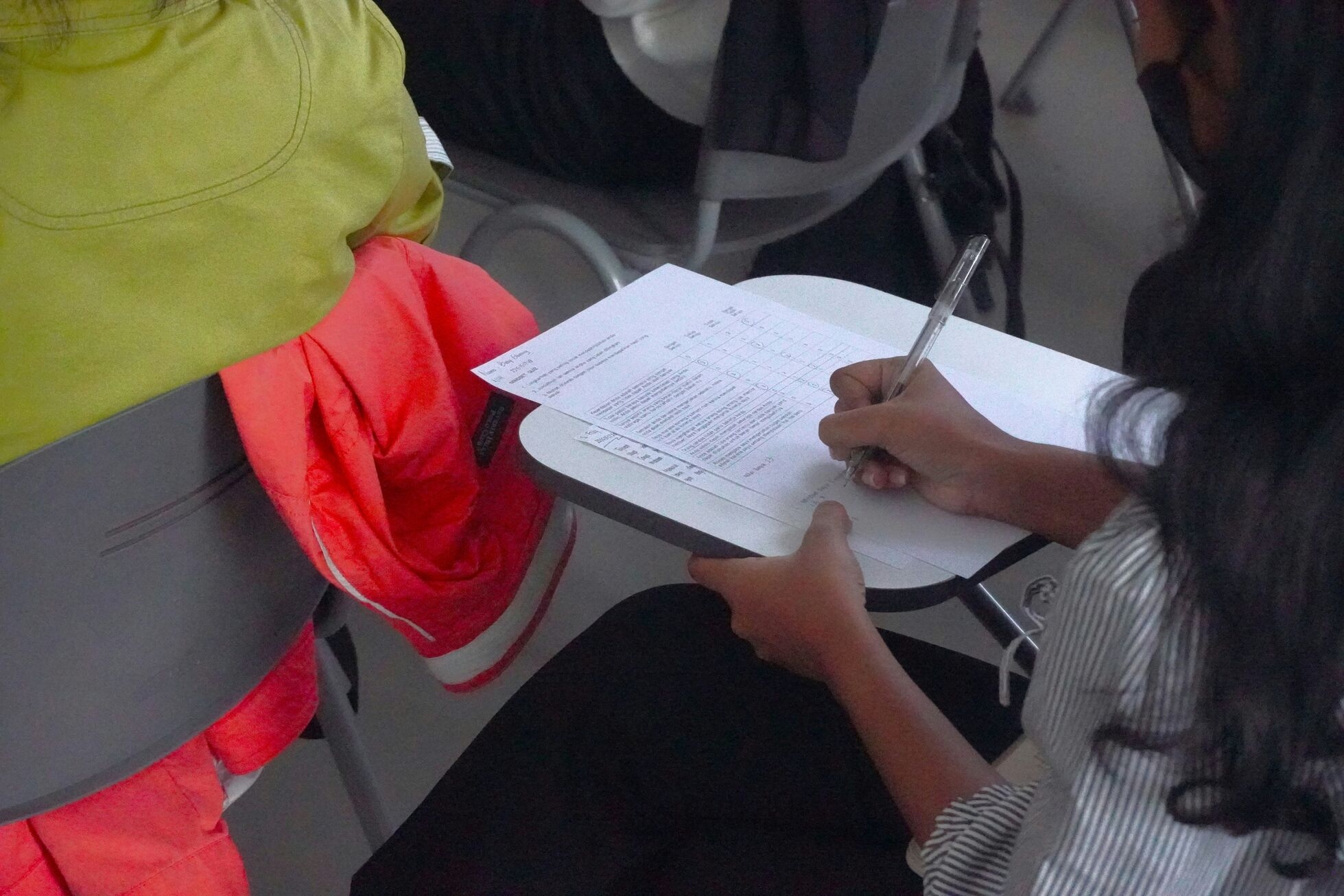For many students applying to optometry school, the Optometry Admission Test (OAT) is one of the most intimidating parts of the process. Board-certified optometrists consistently emphasize that the exam isn’t just a content test—it’s a measure of endurance, strategy, and how well students can apply foundational knowledge under time pressure. The good news? With the right preparation and understanding of its structure, the OAT is absolutely conquerable.
This guide breaks down how hard the OAT really is, what’s on the exam, and how to study effectively—according to experts and high-scoring test takers.
Is the OAT Hard?
Most students agree the OAT is challenging, but not impossible. Its difficulty usually comes down to three main factors:
1. The Amount of Content
The OAT tests multiple college-level science subjects along with math and reading comprehension. Many students underestimate how much detail is required, especially in biology and chemistry. Concepts like digestive enzymes, hormone pathways, molecular structures, and lab-based applications are frequently tested.
2. Time Pressure
Even when students feel confident in the content, pacing can make the test feel harder than expected. Every section requires quick decision-making, strong recall, and focused reasoning.
3. Application Over Memorization
The OAT includes conceptual questions, data interpretation, and scenario-based reasoning. You’re not just recalling facts—you’re using information to solve new problems. That’s especially true in physics, chemistry, and biology passages.
OAT Structure: What’s on the Exam?
Understanding the breakdown of the test is one of the best ways to reduce anxiety. The OAT is divided into four main sections:
Survey of the Natural Sciences (100 questions | 90 minutes)
- Biology (cell biology, molecular biology, physiology, development, genetics, evolutionary biology, ecology)
- General Chemistry (stoichiometry, gases, solutions, equilibrium, kinetics, acids and bases)
- Organic Chemistry (nomenclature, mechanisms, reactions, stereochemistry, spectroscopy)
Many high scorers note that making use of mnemonics for the OAT helps with memorizing structures, reaction patterns, taxonomy, hormones, and biochemical pathways.
Reading Comprehension (40 questions | 50 minutes)
This section includes passages on scientific and academic topics. Students who perform well practice recognizing key words in the reading section of the OAT so they can quickly locate information without rereading entire paragraphs.
Physics (40 questions | 50 minutes)
Physics is one of the most feared sections, especially for non-engineering majors. Experts recommend tackling physics on the OAT with structured review rather than guessing from memory. Many students credit resources like Chad’s physics videos for strengthening conceptual understanding and making mechanics, optics, electricity, and fluids more approachable.
Quantitative Reasoning (40 questions | 45 minutes)
- Algebra
- Probability
- Statistics
- Geometry
- Trigonometry
- Word problems
How Hard Is Each Section?
Difficulty varies by background, but general trends reported by past test-takers include:
<table>
<thead>
<tr>
<th>Section</th>
<th>Perceived Difficulty</th>
<th>Why It’s Challenging</th>
</tr>
</thead>
<tbody>
<tr>
<td>Biology</td>
<td>Moderate to High</td>
<td>Breadth of content and fine details</td>
</tr>
<tr>
<td>General Chemistry</td>
<td>Moderate</td>
<td>Requires both recall and application</td>
</tr>
<tr>
<td>Organic Chemistry</td>
<td>Moderate to High</td>
<td>Mechanisms and reactions under time pressure</td>
</tr>
<tr>
<td>Physics</td>
<td>High</td>
<td>Math-based reasoning and conceptual scenarios</td>
</tr>
<tr>
<td>Reading Comprehension</td>
<td>Moderate</td>
<td>Time management and inference</td>
</tr>
<tr>
<td>Quantitative Reasoning</td>
<td>Moderate</td>
<td>Fast recall and multi-step problems</td>
</tr>
</tbody>
</table>
Understanding these challenges allows you to build a study plan around them.
How to Study for the OAT: Proven Strategies
Board-certified optometrists and top scorers repeatedly point to consistency, active learning, and realistic practice as the biggest predictors of success. Here’s how to approach studying effectively.
1. Start Early and Build Structure
Most students spend 2–4 months preparing. A dedicated 8–12 week plan with daily study blocks is ideal. Create a schedule that balances content review with practice questions.
2. Master the Sciences First
Biology, chemistry, and physics make up the bulk of the exam. Use active study techniques like:
- Concept mapping
- Flashcards (especially for reactions and vocabulary)
- Practice quizzes
- Rewriting mechanisms
- Group review sessions
Understanding systems—like physiology, biochemistry, and digestive enzymes—is more powerful than memorizing facts alone.
3. Use High-Yield Resources
Prep platforms like Bootcamp offer structured content tied to real test formats, which helps you review efficiently. OAT Bootcamp comes with detailed lessons on everything you need to learn about the OAT, access to community support from fellow students, and a highly rated app for iOS and Android so you can study on the go.
4. Learn Through Application
Don’t just read notes. Try:
- Timed practice passages
- Problem-based drills
- Question explanations
- Video walkthroughs
Focus especially on topics and question types that appear frequently.
5. Practice Under Test Conditions
Take at least two or three full-length practice tests before exam day. This builds stamina, reveals timing issues, and reduces anxiety.
6. Target Weak Spots
After each practice test, review mistakes carefully. Ask yourself:
- Did I misunderstand the concept?
- Did I run out of time?
- Did I overthink the question?
- Was it a simple recall issue?
This reflection leads to smarter studying and faster improvement.
How Long Should You Study?
Here’s what most successful test takers follow:
<table>
<thead>
<tr>
<th>Timeline</th>
<th>Weekly Study Hours</th>
<th>Notes</th>
</tr>
</thead>
<tbody>
<tr>
<td>12+ weeks</td>
<td>10–15 hours</td>
<td>Ideal for full review</td>
</tr>
<tr>
<td>8–10 weeks</td>
<td>15–20 hours</td>
<td>Most common plan</td>
</tr>
<tr>
<td>6 weeks</td>
<td>20–25 hours</td>
<td>Accelerated, best with a strong foundation</td>
</tr>
</tbody>
</table>
A balanced weekly plan might include:
- 3–4 days of science review
- 1–2 days of practice tests or question sets
- 1 day of review and catch-up
When to Start Preparing
Experts suggest starting once you’ve completed:
- General Biology
- General Chemistry
- Organic Chemistry
- Physics
- Pre-calculus or basic statistics
If you’re missing a prerequisite, build in extra time to self-teach or review.
Final Advice from Experts
Board-certified ODs and high-scorers emphasize:
- Consistency beats cramming.
- Practice questions are more valuable than rereading textbooks.
- Realistic testing conditions reduce stress on exam day.
- Reviewing mistakes is a key to raising scores.
- Trusted resources make a difference—especially for tricky topics.
With the right plan and tools, the OAT feels far less overwhelming and more like a systematic challenge you can control. Start studying for the OAT for free with OAT Bootcamp. Get access to a supportive student community, practice tests that are representative of the OAT, detailed video lessons, and a mobile app for iOS and Android.
Get everything you need in one place. Start studying today for free.

















